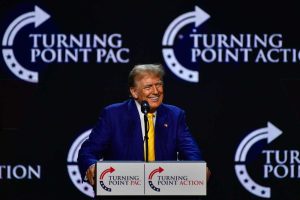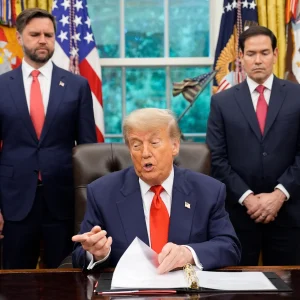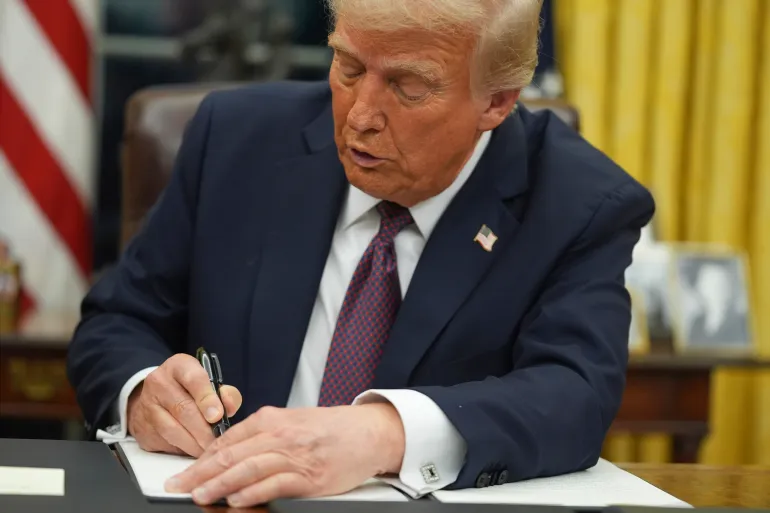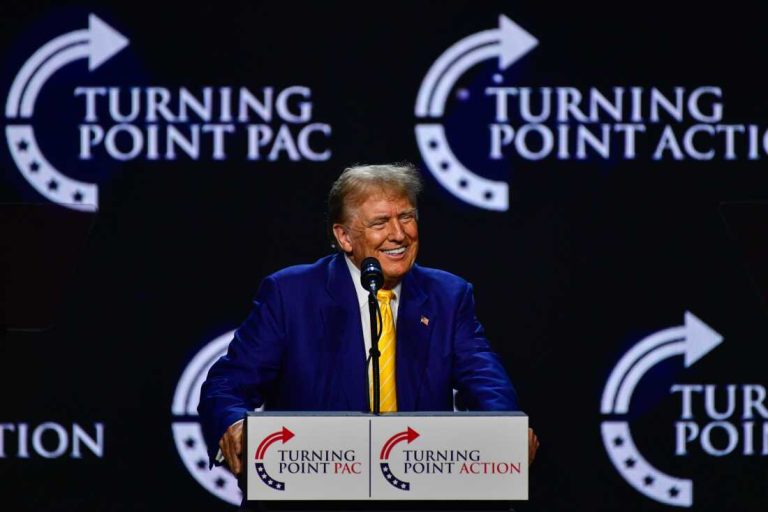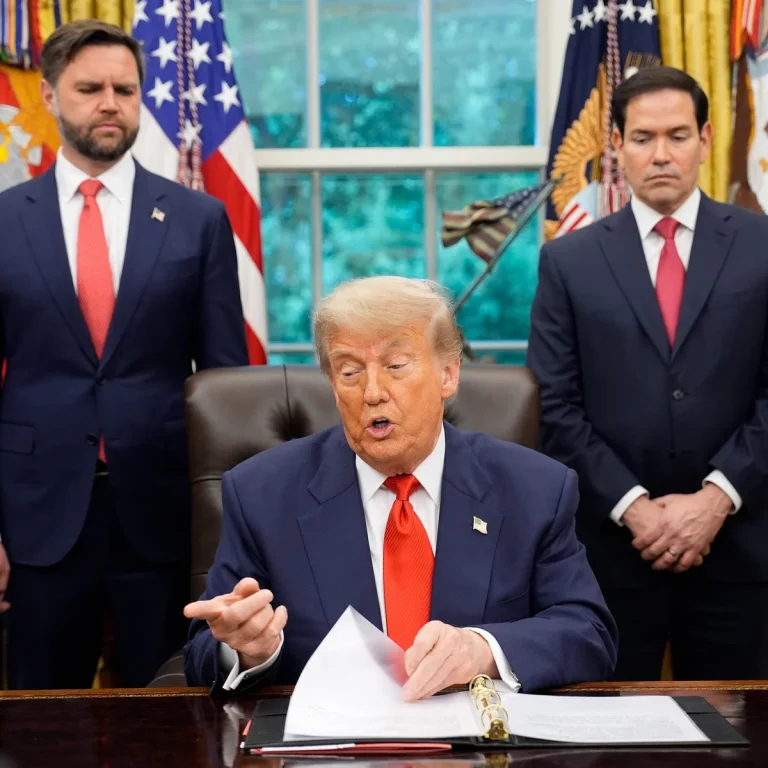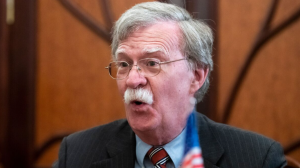A Bold Move in Transatlantic Relations: What This U.S.-EU Agreement Could Mean for the Global Economy
In a rapidly changing geopolitical landscape, it’s no surprise that high-level negotiations can spark major global transformations. Over the past few years, tensions, tariffs, and disputes have reshaped the way countries engage in trade. But a recent development, quietly announced in Scotland, might just become one of the most pivotal shifts in U.S.-EU relations in decades.
Though many in the media have glossed over the details, this agreement could have lasting implications not only for transatlantic commerce but also for the global market at large. To truly understand its magnitude, one must look at both the broader context and the finer points — some of which are still unfolding.
Let’s explore how this game-changing accord came together, and why its ripple effects could touch nearly every corner of the world economy.
The Setting: A Quiet Yet Powerful Announcement
President Donald Trump and European Commission President Ursula von der Leyen met privately at Trump Turnberry in Scotland — a location that itself carries no shortage of symbolic weight. Following their discussion, the two leaders addressed the media in a subdued but tightly managed press conference.
There were no fireworks, no raucous applause, and no flashy displays. Instead, what followed was a surprisingly candid dialogue that hinted at a massive shift beneath the surface.
For weeks, speculation had swirled that the U.S. and EU were headed toward a deeper economic alignment — or possibly a serious trade confrontation. Few expected what came next.
The Global Trade Climate: A Brief Snapshot
Before diving into the specifics of the agreement, it’s important to understand the global context. Trade between the United States and the European Union is nothing short of colossal. In 2024 alone, their combined trade in goods and services topped $1.8 trillion — making it one of the largest bilateral trade relationships in history.
This dynamic accounts for nearly 30% of all global trade and a staggering 43% of the world’s GDP. Naturally, any policy change between these two giants sends waves across financial markets, supply chains, and political spheres.
And in recent years, those waters have been anything but calm.
From disputes over steel tariffs to clashes involving digital taxes and agricultural policies, the U.S.-EU relationship has faced more than its share of friction. So when leaders from both sides emerged in apparent unity, ears perked up — and for good reason.
Why This Matters More Than You Think
So, why all the secrecy? Why not blast the headlines with every detail upfront?
Because this wasn’t just about adjusting tariffs or tweaking a trade balance. It was about signaling a deeper shift — a mutual recognition that long-standing imbalances needed correcting, but not through confrontation.
European Commission President Ursula von der Leyen acknowledged this directly, stating:
“The starting point was an imbalance, a surplus on our side and a deficit on the U.S. side… we wanted to rebalance the trade relation.”
And that rebalancing is exactly what happened.
Step by Step: What the EU Agreed To
While full documentation of the deal is still expected in the coming weeks, here’s what has been confirmed so far — and it’s substantial:
-
$750 Billion in U.S. Energy Commitments: The EU agreed to purchase an extraordinary volume of American energy products. This includes LNG, oil, and renewables, expanding U.S. energy dominance on the global stage.
-
$600 Billion in U.S. Investment: European nations pledged a record investment into the U.S. economy. These funds are expected to be directed toward infrastructure, manufacturing, and tech innovation.
-
Zero Tariffs on U.S. Goods: In a stunning reversal of prior tensions, the EU will eliminate tariffs on all U.S. products, from agriculture to advanced machinery.
-
Massive Military Purchases: While the exact figures remain undisclosed, Trump claimed European nations committed to purchasing “hundreds of billions” in American military equipment.
Such a multi-pronged commitment is not only rare — it’s virtually unprecedented.
But There’s a Catch…
With all the fanfare surrounding the EU’s concessions, one might wonder: what did the U.S. give up in return?
President Trump answered that question directly — and surprisingly candidly.
“We don’t know what that number is,” he said of military purchases, “but for the most part [European markets] were closed, and now they’re open.”
However, one major U.S. action raised eyebrows:
-
A 15% Tariff on European Imports: Despite all the goodwill, Trump announced a sweeping new tariff on a wide range of European goods, including the auto sector.
On the surface, this might appear contradictory — why impose new tariffs amid mutual cooperation?
But according to the Trump administration, the move is designed to ensure accountability and enforcement. It may also serve as leverage in case future trade friction arises.
European Reaction: Pragmatic and Strategic
German broadcaster NTV and other European outlets described the EU’s stance as “pragmatic,” driven by internal pressure to finalize the deal quickly. German Chancellor Friedrich Merz publicly supported the effort, emphasizing:
“It would be better to be quick and easy than lengthy and complicated…”
Such urgency reflects growing economic pressures inside Europe, particularly related to energy costs, defense, and declining global competitiveness.
From the EU’s perspective, this deal may be a long-term investment in economic survival.
The Bigger Picture: Why This Deal Could Reshape Trade for Decades
When two economic giants collaborate — rather than clash — the consequences ripple far beyond their borders. This agreement hints at a shared desire to outmaneuver rising competition from China and to establish a rules-based framework for future global commerce.
It’s also a bold political move. President Trump’s strategic use of tariffs, combined with dramatic incentives for trade partners, seems to have produced tangible outcomes.
Meanwhile, the EU’s readiness to invest heavily in the U.S. economy and pivot toward American energy reflects a profound realignment of strategic interests.
Final Thoughts: The Story Has Just Begun
This U.S.-EU agreement might have been quietly announced, but its effects won’t remain quiet for long. With trillions in trade at stake and new frameworks being laid, the global economy may be entering a new era — one shaped by calculated cooperation, strategic tariffs, and high-stakes diplomacy.
The full implications of this shift will only become clear over time. But one thing is already certain:
This is more than a trade deal. It’s a bold reimagining of global economic power.
https://twitter.com/EricLDaugh/status/1949523956437799376

Emily Johnson is a critically acclaimed essayist and novelist known for her thought-provoking works centered on feminism, women’s rights, and modern relationships. Born and raised in Portland, Oregon, Emily grew up with a deep love of books, often spending her afternoons at her local library. She went on to study literature and gender studies at UCLA, where she became deeply involved in activism and began publishing essays in campus journals. Her debut essay collection, Voices Unbound, struck a chord with readers nationwide for its fearless exploration of gender dynamics, identity, and the challenges faced by women in contemporary society. Emily later transitioned into fiction, writing novels that balance compelling storytelling with social commentary. Her protagonists are often strong, multidimensional women navigating love, ambition, and the struggles of everyday life, making her a favorite among readers who crave authentic, relatable narratives. Critics praise her ability to merge personal intimacy with universal themes. Off the page, Emily is an advocate for women in publishing, leading workshops that encourage young female writers to embrace their voices. She lives in Seattle with her partner and two rescue cats, where she continues to write, teach, and inspire a new generation of storytellers.

